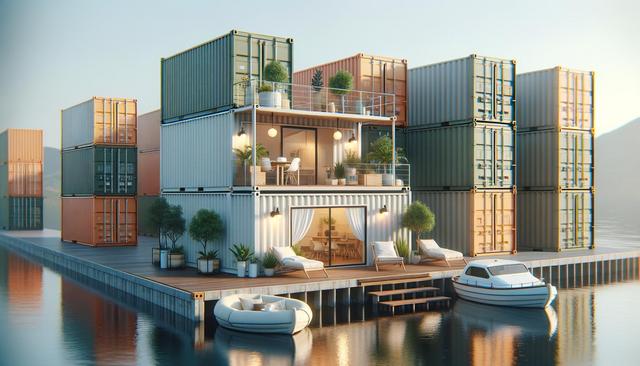Understanding the Concept of Container Homes
Container homes are residential structures built using repurposed shipping containers. Originally designed for transporting goods across oceans, these steel containers are now being transformed into livable spaces. Their modular nature makes them ideal for flexible design, efficient land use, and cost-effective construction. As the demand for affordable housing continues to rise, container homes are gaining recognition as a practical alternative to traditional building methods.
The transformation process typically involves insulating the container, modifying its structure for doors and windows, and installing essential systems like plumbing and electricity. Depending on the number of containers used, these homes can range from compact single-unit dwellings to multi-level residences. The appeal lies in their simplicity, speed of construction, and the potential to create a personalized space with a smaller environmental footprint.
Affordability and Cost Efficiency
One of the most significant advantages of container homes is their affordability. Compared to conventional houses, the base cost of a shipping container is relatively low. When combined with efficient construction practices, container homes can drastically reduce the total expenses involved in building a new home. This makes them an attractive option for first-time homeowners, retirees, or those looking to downsize.
Several factors contribute to their cost efficiency:
- Reduced materials: The container serves as both structure and frame, minimizing the need for additional construction materials.
- Shorter construction timelines: With much of the structure pre-built, projects can be completed more quickly than traditional homes.
- Lower maintenance costs: Steel containers are durable and resistant to many common issues like mold, pests, and fire.
These benefits make container homes a compelling solution in areas where housing affordability is a pressing concern.
Maximizing Space in Compact Designs
Despite their compact dimensions, container homes offer surprising versatility in layout and design. By stacking and joining multiple containers, homeowners can expand their living space both vertically and horizontally. Creative interior planning allows for functional and stylish living even within limited square footage. Designers often focus on multi-purpose furniture, open-plan layouts, and strategic storage solutions to enhance usability.
Some space-maximizing techniques include:
- Using foldaway or built-in furniture to keep floor space open when not in use
- Incorporating vertical storage options such as lofted beds or high cabinets
- Maximizing natural light with large windows and glass doors to create the illusion of more space
These thoughtful approaches help make container homes not only livable but also enjoyable for individuals and families alike.
Sustainability and Environmental Impact
Container homes align well with environmental sustainability goals. By repurposing used shipping containers, these homes reduce waste and minimize the consumption of new raw materials. Additionally, many builders incorporate eco-friendly materials and energy-efficient systems into their designs to further reduce their environmental footprint.
Common sustainable features include:
- Solar panels for renewable energy generation
- Rainwater harvesting systems
- Energy-efficient insulation and windows
- Low-impact foundations that reduce soil disruption
This eco-conscious approach appeals to individuals interested in reducing their personal impact on the environment, while also experiencing the benefits of lower utility bills and sustainable living practices.
Challenges and Considerations
While container homes offer many advantages, they also present unique challenges. Building codes and zoning laws can vary significantly by location, and not all areas are receptive to non-traditional housing formats. It’s important for potential homeowners to research local regulations and work with experienced professionals who understand the nuances of container construction.
Other considerations include:
- Insulation and ventilation: Steel containers are highly conductive, which can lead to temperature extremes without proper insulation.
- Structural modifications: Cutting and joining containers requires specialized skills to maintain structural integrity.
- Availability and condition of containers: Not all containers are suitable for residential use, especially those that have transported hazardous materials.
Addressing these issues early in the planning process ensures a smoother construction experience and a more successful outcome.
Conclusion: A Modern Solution for Affordable Living
Container homes offer a practical and forward-thinking solution for individuals seeking affordable, flexible housing options. Their cost-efficiency, adaptability, and potential for sustainable living make them a viable choice in both urban and rural settings. While there are challenges to consider, with proper planning and professional support, container homes can provide a comfortable and stylish living space that meets the needs of a wide range of homeowners. For those exploring alternative housing solutions, container homes stand out as a creative and resource-conscious option worth considering.




Leave a Reply